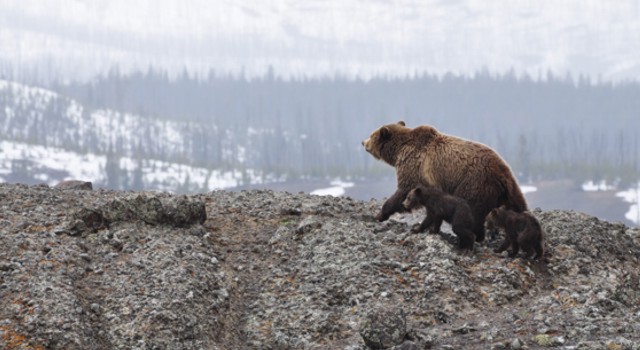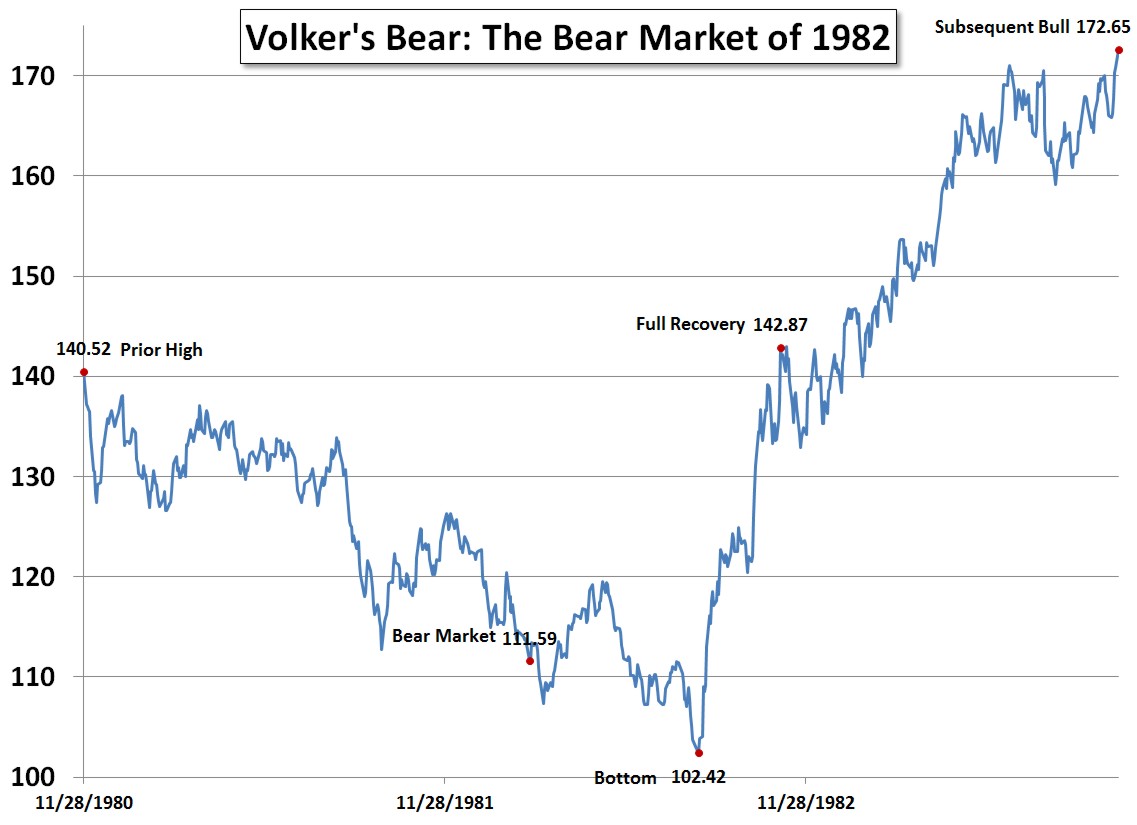 A Bear Market is defined as an index dropping at least 20% from some previous high. Smaller drops in the market between 10% and 20% are called “corrections.” Larger drops of at least 50% are called a “crash.”
A Bear Market is defined as an index dropping at least 20% from some previous high. Smaller drops in the market between 10% and 20% are called “corrections.” Larger drops of at least 50% are called a “crash.”
Since 1950, there have been exactly nine Bear Markets in the S&P 500 Price Index (the most common representation of “the market”). Only one of these turned into a stock market crash. The other eight stopped dropping before the loss from peak to bottom was greater than 50%.
Although you might think that only eight Bear Markets over 65 years makes its occurrence uncommon, each bear market lasts about 3.3 years from peak to bottom and back to full recovery. In fact, the S&P 500 spends 18.19% of the time with losses of 20% or greater from some previous high. That means that, on average, 66 days of each year the S&P 500 Price index is down more than 20% from some previous high.
Examining past Bear Markets can help provide some context when we experience the next one.
Volker’s Bear: The Bear Market of 1982
The market peaked on November 28, 1980 just 24 days after the 1980 Presidential election in which challenger Ronald Regan defeated incumbent Jimmy Carter. Inflation was at 13.58%.
On February 22, 1982, the S&P 500 Price Index dropped to 111.59, down -20.59% from its prior high on 11/28/1980. The market had been dropping for 451 days (1.2 years).
In 1979, President Jimmy Carter had appointed Paul Volcker as Chairman of the Federal Reserve. With inflation running double digits the Federal Reserve under Volker raised the federal funds rate from 11.2% to 20% by June of 1981.The intent was to break the inflationary spiral within the United States. But raising the federal funds rate also made it more difficult to borrow money. This helped cause the 1980-1982 recession and a national unemployment rate of over 10%. As a result, the Bear Market of 1982 could be called Volker’s Bear.
For those who did not live through those days, they were some of the difficult days of the Cold War. Carter had rejected the policy of detente and pressed the Soviet Union regarding their internal human rights violations. In January of 1980, Carter curtailed trade with the Soviet Union and place an embargo on sending them grain. Eighteen days later, the Soviet Union arrested civil rights activist Andrei Sakharov. In June, Carter required all young men 18-25 years old to register for a military draft. That summer, Carter organized a boycott by 66 countries of the Summer Olympics in response to the Soviet invasion of Afghanistan.
A series of strikes in Poland ended with the Gdansk Agreement recognizing Solidarnosc (Solidarity), the first independent trade organization. The following year, Pope John Paul II received Lech Walesa at the Vatican. Four months later, the Pope is shot four times by a gunman assumed to be on orders from the Soviet KGB. Polish demonstrators protest food rationing in the streets of Lodz. Later that year, Polish First Secretary Wojciech Jaruzelski declared Martial law.
Other quieter headlines of those years include the beginning of new services and technologies such as the the Global Positioning System (GPS),Pac-Man and Donkey Kong, ENQUIRE (the beginning of the work which resulted in the World Wide Web ten years later), the DIX standard for Ethernet, Compact Discs (CDs), and the introduction of the IBM Personal Computer. These milestones would impact the stock market far more than the political worries.
The S&P 500 bottomed 171 days later on August 12, 1982 at 102.42, down -27.11%.
By the time the stock market had bottomed, inflation had been reduced 8.54% and was only 5.04%.
After bottoming, the market fully recovered its prior peak just 83 days (2.8 months) later on November 3, 1982. That day the Dow Jones Industrial Average surged 4.25% settings its first all-time high in more than 9 years since January 11, 1973.
The entire cycle lasted 705 days (1.9 years), 622 days from prior peak to the bottom and 83 days back to the prior peak.
Bear markets are often a precipitous decline followed by a slower and steadier recovery. Volker’s Bear is rare in that a slow and steady decline was followed by a sharp precipitous recovery.
After recovery, the market continued its upward trend for an additional 11.4 months.
The total 14 month (1.2 years) bull market ultimately peaked on October 10, 1983 at 172.65, up 68.57% from the bottom of the bear market. By the time the stock market peak, inflation had been reduced to just 2.85%.
During the total recovery from the bottom, the markets experienced an annualized return of 56.80%.
The quick recovery after Volker’s Bear shows that economic hardships do not require government stimulus or low interest rates to aid recovery. In fact the government “solution” which worked such wonders during this time period involved raising interest rates, lowering taxes, and removing regulation. This Bear Market also shows that even when the economy is in the midst of double-digit inflation and double-digit unemployment, it is still better to be invested than not. This was a market where it was better to get into the market a year too early than a month too late.
